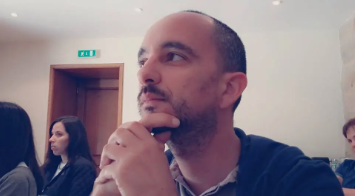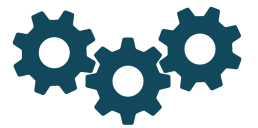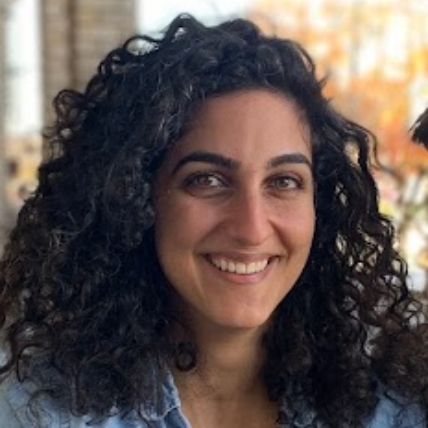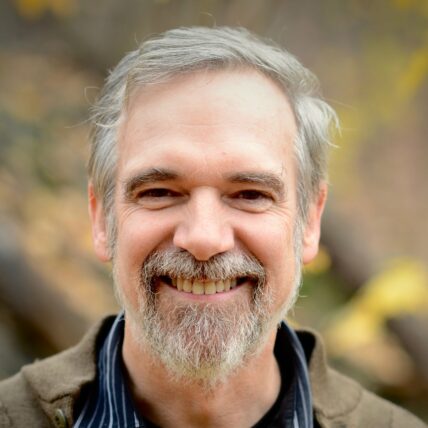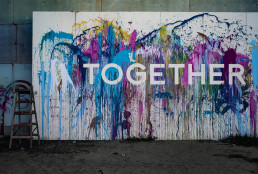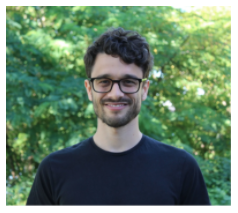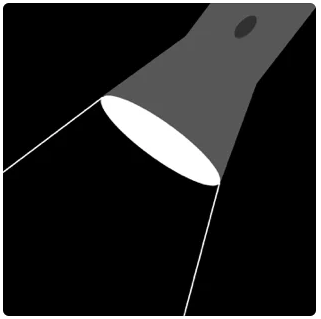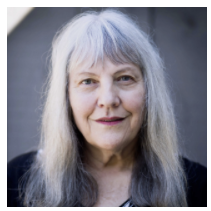Applying regenerative practice to systems beyond place — some thoughts
By way of introduction: spiky fruit
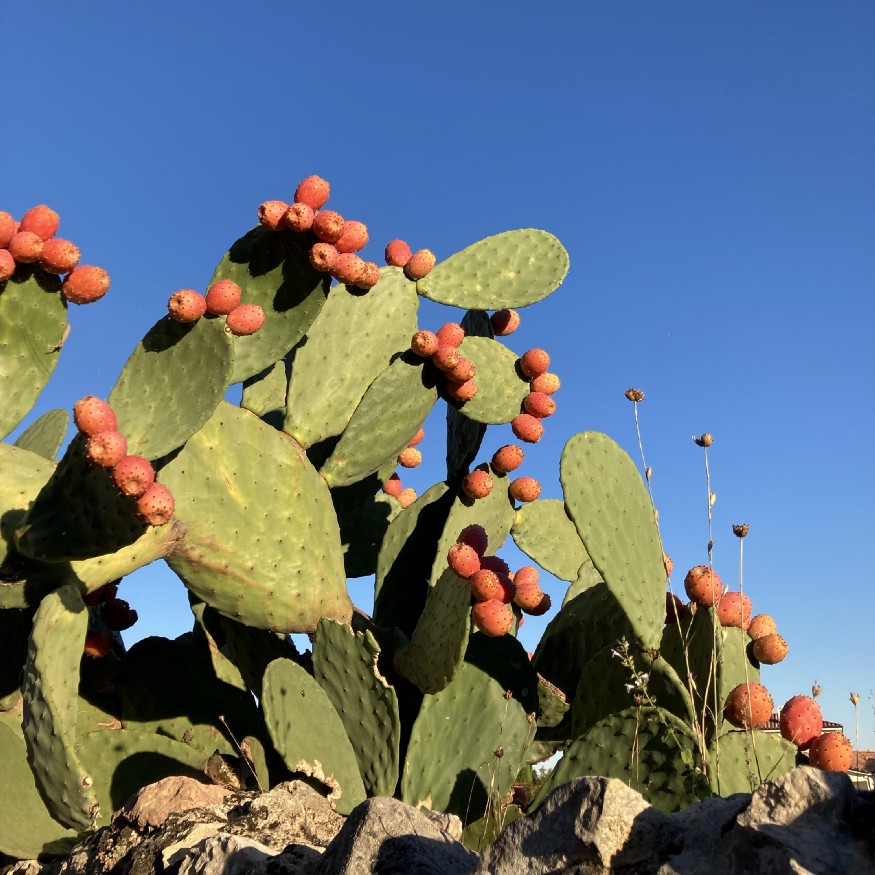
It’s the first of October, and I’ve been writing this piece for over half a year! Yesterday this cactus caught my eye. The spiky leaves and the ripe fruit spoke to me of the necessity to take these unpolished thoughts and offer them up. If handled carefully and peeled, the juicy prickly pear can make a great salad. It’s painstaking and potentially irritating work. The flesh is not as flavorsome as other fruit, but it’s what grows and abounds here and now. So perhaps you can enjoy the thoughts that follow in that spirit!
Rising to the challenge
Our societies and our living planet are struggling to survive with the threat of climate change, mass extinction of species, depletion of the living resources of soil on all our continents — the list goes on. In the face of this regenerative work offers the hope of enabling the extraordinary capacities of living systems to adapt and create the conditions conducive to life.
There is an active community of regenerative practitioners supporting change-makers the world over to work from the principles of living systems in order to revive and evolve the places and the systems they are working with. Living systems are grounded in places, adapting to local conditions and contexts, evolving strategies to thrive in the myriad diversity of environments, from hot deep sea vents, to estuaries where sea and land intermingle, to cloud forests of the tropics, to green ‘deserts’ of grassland. The source of regenerative practice is found in the dynamic relationship of life and place, and the inevitable relationship of people to and within other living entities. People, human societies, are living systems, and as such we are deeply connected to the places we live and depend upon.
However, as human societies have evolved over the last few hundred years into a global civilization, and many of the challenges we face are playing out on the scale of the whole planet, regenerative practitioners are called to find ways to apply our living systems approaches to activities that seem disconnected from “place”. When we look to change international business supply chains, when we design digital services, when we think about what sustainability means for huge global retail corporations, how can we bring regenerative practice to bear? In an age where the shift to online working has been accelerated through the Covid-19 pandemic, and I write this from a co-working space in the south of France as part of a team with people across four continents, how can the potential of life-regenerating work step into and beyond hyper-local “place” as a contribution to a societal shift so needed this decade?
What follows are a few thoughts, deeply influenced by my work and dialogues with Regenesis, Future Stewards and other regenerative practitioners. These thoughts have formed as I apply this practice to the School of System Change, an international endeavour to support change-makers navigate the field and practice of systems change, growing their capacity to work with complexity and uncertainty, and to contribute to great shifts in business, civil society, government, communities and philanthropy.
Disconnected from place?
I deliberately speak of activities that seem disconnected from place. Our human capacity to understand ourselves as disconnected from nature, from living systems, from place, has been honed over several hundred years of Western mechanistic thinking. Those of us who have learnt to understand our world in this way continually develop constructs — both physical and conceptual — that reinforce this premise of separation or non-dependence on life. We build global digital platforms with remote-working teams. We manage supply chains from warehouse to container to truck to logistic platform to supermarket in a complicated chain through multiple built environments made of concrete, metal, tarmac. We speak of dematerialised banking, and have decoupled finance from the “real” economy. We manage agricultural production through sterile seeds and petrochemical fertilisers.
I have learnt to see how all of these activities are nested within the living systems of our planet. The people working behind their screens or their steering wheels are alive, they need food to nourish them that is alive too (or at least was recently!). Our businesses, communities and cities are complex living systems with the same needs and metabolic functions as a forest ecosystem: nourishment for energy, clean water, purification of waste, temperature control… The people and places impacted by “dematerialised” activities may be widespread and seeminging disconnected, however they are indubitably alive, and in many contexts in need of activating their regenerative potential to tackle increasingly difficult issues of physical and mental health, pollution, soil degradation, and adversity.
Pretending that a human activity has no grounding in living systems and places — because of its digital or global nature, because it involves commodities sourced via intermediaries and their warehouses — carries a high risk of creating harmful externalities to the living systems that are inextricably linked to these activities but remain invisible in our designs. This decoupling of our activities from the living systems we operate within perpetuates the deep-seated pattern that has led to the crises we are living into today, from climate change to the global pandemic.
Putting living systems back in the equation isn’t easy work, but it is possible, and deeply rewarding. Where might we start?
I am offering three sets of practices that can support a regenerative outlook, even when working with systems that seem disconnected with place:
- Seeing life in everything
- Working with specificity not generic outcomes
- Starting with the care we hold for our fellow living beings
Seeing life in everything
The first set of three practices are helping me develop my ability to see living entities — people, organisations, places — as alive.
Working with qualities of aliveness
One of the ways I have learned to do this is through noticing three qualities of aliveness (from Regenesis):
- evolution — organic development and unfolding, where things aren’t going to plan, but are moving and adapting to uncertainty and complexity, and there is no going back!
- viability — relational dynamics that are necessary to survival over time, relationships to wider ecosystems, be they food webs or markets or fields of shared endeavour; and
- vitality — the spontaneous expression of life force, uniqueness, purpose and energy that can be felt when a person or an organisation is flourishing
These qualities are interrelated — the vitality of a living system needs nourishment to be viable over time, and continuously adapts and evolves as the world changes around us.
Noticing these qualities helps me engage with living systems — including human systems seemingly disconnected from the living world — as inherently alive. It is also a way into identifying which capacities might need enhancing to ensure ongoing life in these systems.
Changing metaphors
Our mechanistic ways of thinking are deeply anchored in metaphors we use all the time! So I practice changing the metaphors and looking for life-sourced images to describe what’s going on. How might we grow capacity rather than build it? How might we look for nodal interventions rather than leverage points (a node refers to a place in a living entity where many flows come together, whereas a lever is a component in a machine)? How might we seek evolution not scale?
Sometimes the more ecological or metabolic metaphors can seem a bit too hippie, and I don’t always adopt them, however the conscious practice of identifying which paradigm I’m thinking from through the language I employ is very insightful. I have noticed how comfortable it is to revert to terms that imply predictability and the ability to control outcomes! (building capacity, driving change, measuring impact — just some examples) Adopting life-sourced metaphors implies leaning into uncertainty, working with what is emerging, and thinking of what I do as a contribution to wider work.
Looking for connection to place
The third exercise is trying to ground the systems I’m working on in place — even if these places are multiple and seemingly disconnected, like across a supply chain. Reminding myself that life is rooted. That even hydroponic agriculture relies on nutrients that have come from the living earth — somewhere! Our office sites have footprints on the ground, and are situated in complex ecosystems.
Envisaging the ways in which our activities are connected to and dependent upon living places, and then questioning the impacts on the vitality, viability and evolution of these places — at multiple scales — can yield insights both devastating and full of opportunity for change. Devastating because we might notice how much life has been destroyed as we create an inert built environment for ourselves, for example pouring concrete over the earth so that the microorganisms beneath will be disconnected from the flows of water from rain and nutrients and energy released into the soil through plant roots. Full of opportunity because we can amplify the extraordinary qualities of life which will continue to evolve and regenerate, through multitudes of human innovations that work in symbiosis with the living world.
Looking for this connection to place in the history of the organisation is often a good place to start, as the identity and culture — however international in its operations — may well be imbued with the unique characteristics of the ground it sprang up from in the beginning.
Working with specificity not generic outcomes
This set of practices is helping me work with the unique characteristics of the systems I’m involved with to identify differentiated and coherent strategies for action, producing unique and positive outcomes.
I often hear the ask for a definition or catalogue of what might be “regenerative outcomes”. In the face of the crises we’re experiencing, and with the best will in the world to effect positive change, people and organisations want answers, and clear how-tos. I hear the urgency, and the need for simple, actionable responses. However, I am learning to first respond with a set of questions to reach differentiated answers — as living systems are differentiated and there is no one-size-fits-all. The set of questions below can quite quickly lead to answers that in turn will be much more powerful in unlocking life-regenerating processes.
The overarching starting question here is What is the essential characteristic or nature of what we’re working with?
Some of the ways into this question are
- What is the unique purpose of this business or endeavour (which may be deceptively different from the mission statement, being more what is alive in the business as a whole, it’s core pattern that repeats across scales from teams to international operations, and configures this organisation’s contribution to a wider sphere)
- What is the core property of the material / commodity / species we’re working with? How might we work with the inherent properties of aluminum, or cotton, or soap — for example — to work out how these can be expressed in service of life?
- What are living systems like round here? How have they — people, plants, animals, micro-organisms — adapted to the specific living conditions of this place? What might we learn from these strategies?
Starting with the essential characteristics of what we’re working with is a route to seeing the potential that could be expressed if we lifted these up to serve a living world. It can help us be open and curious. We can move beyond the generic plan to “plant trees”, to question which essences, which combination of context-appropriate species, we might encourage in this particular place.
We can go further to understand that if we’re a clothing company, for example, planting trees is all very well but it doesn’t harness the potential of the core of what we do — the living materials, people and identity that are at the centre of our activity. The regenerative contribution of a luxury brand will be distinctly different from that of a high-street clothing brand. Recognising our unique approach, and going beyond market differentiation to putting this in service of the living systems we’re involved with, will highlight practical actions we can take leading to powerful regenerative outcomes.
Starting with the care we hold for our fellow living beings
One of my recent insights about regenerative work is that it stems from a deep care about the world, which taps into vulnerability, and therefore requires a certain kind of intimacy and attention. When we care, we are in relationship being to living being. We can be curious about what is specific about what is happening here and now, we can be empathetic — feeling from the place of the other, we can work with emotional and intellectual intelligence together, bringing our whole selves to the situation at hand.
It’s difficult to talk about how much we care for the living world in situations where everything around us (our office space, the board room, our managerial practices, our scheduling habits) are designed from mechanistic assumptions and “man-made” materials. Paying attention to what is alive, even in these contexts, can require a shift in how we show up and what we are giving our attention to. Put another way, it’s about being as much as doing.
This leads to a new set of questions around the enabling conditions for some of this work:
- How might we let ourselves see our fellow workers, customers, citizens as whole people striving to live nourishing lives?
- How do we move from concern for a statistic (e.g. numbers of mental health-related emergency calls) or worry about a trend (e.g. decreasing yields from ever poorer soils) to care about the living beings — the people, the ecosystems of microorganisms in the soil — we’re so interconnected to?
- What are the qualities of space we might need to tap into this other way of knowing and deciding what to do in the face of the overwhelming challenges we’re facing?
Bringing regenerative practice home
I know I’m a conversational learner, and I thrive in deep conversations and spaces of inquiry around these sorts of questions. I can see how through these collective moments my thinking about the world is evolving, and informing my work in the long term. I also practice micro-experiments to take my thinking into my daily life in a shorter timescale — these range from spending a whole summer without killing a single mosquito as an experiment in respecting the equivalence of life-forms, to fermenting kimchi in my kitchen, to applying the vitality-viability-evolution framework to all sorts of projects, situations and relationships at work and at home through five-minute sketches.
This may not be your way of connecting with aliveness. At an online team meeting a few months back I was struck by the beautiful diversity of situations when people feel most alive — from on a sea shore, to being in crowded public transport. If you invite yourself into a space of caring for the living world for a moment, what is it you notice? And how might you carry that with you into the big, wide world, as a root to help you with your very unique contribution to systems change?
originally published at School of Systems Change
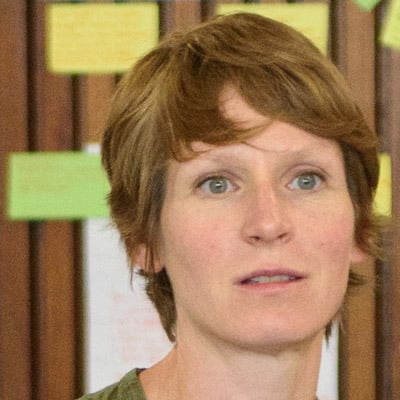
Laura Winn is head of the School of System Change at Forum for the Future. She works to develop the School as a networked organisation that supports change-makers from diverse backgrounds and contexts, providing them with new capabilities to tackle an increasingly complex set of sustainability challenges. Laura's own practice stems from living systems and regenerative approaches, learnt and applied across multiple small-scale and large-scale projects.

Network Weaver is dedicated to offering free content to all – in support of equity, justice and transformation for all.
We appreciate your support!
donate in the box above or click here
Energy System Science for Network Weavers: A Summary
“Culture is a verb.”
– Rowen White, Seed Keeper, activist and farmer from the Mohawk community of Akwesasne
“It’s all about how things are flowing.”
– Gwen McClellan, acupressurist and holistic healer
“A living body is not a fixed thing but a flowing event, like a flame or a whirlpool.”
– Alan Watts, philosopher and writer
“Seeing energy flows so that we can engage with them in positive ways is not some mystical, esoteric art, but the role of engaged human beings.”
– Joel Glanzberg, permaculturist and sustainable builder
Last week I teamed up with Dr. Sally J. Goerner, who stewards a transdisciplinary team of researchers and practitioners in the Research Alliance for Regenerative Economics, to offer an interactive session to The Weaving Lab on the Energy System Sciences and how they might support network weavers working for social change in a variety of contexts. Energy System Sciences (ESS) is “an umbrella term for disciplines that use the study of energy flow networks to understand the laws of systemic health, growth and development in living, nonliving and supra-living systems.” ESS disciplines include: Chaos, Complexity, Resilience, Ecological Network Analysis, Self-Organization Theory, Nonequilibrium Thermodynamics, Panarchy, and others. It was a lot to present and absorb and process during our short 2 hour session, and so I have made an effort here to summarize and simplify …
Everything is made up of energy, so says “western” science and also many wisdom traditions (think spirit or chi) and indigenous peoples (see Sherri Mitchell), but many of us often don’t like to use the word “energy” (too woo woo). And perhaps that is to our detriment! Switching from a “matter” orientation about everything to an “energy” view can help us see and do things differently.
Systems are complex networks of interconnected “parts” that work together. Flows of energy of different kinds are crucial for a system to function (carbon in the biosphere, traffic in cities, supplies and information during a disaster response, ideas and emotions in a social group, nutrients on a farm, money and other resources in economies).
The Energy System Sciences (ESS) see all systems as “flow networks” or structures that arise from the circulation of resources, information, nutrients, etc. Thinking through the lens of flow, systemic health can be seen as being based on things like: investment and re-investment of key and diverse resources, healthy outflows (not polluting or poisoning the ecosystem), the velocity and spread of resources in the system, cross-scale circulation, etc. The nature and quality of these flows determines how systems are able to adapt and evolve in healthy and health-promoting ways.
ONE BIG PROBLEM now is that there is a dominant narrative stemming from the power and influence of oligarchy (rule of and for the few) and oligarchic capitalism (economies that are run by and support the few), which seeks to increase the wealth of “elites” at the expense of most people and the planet. Narrative, in contrast to story, is a way of looking at the world. In a sense, it’s a big story that influences thought, meaning and decision-making. The dominant oligarchic narrative and view is grounded in things and beliefs like “the divine right of capital and kings,” a master/slave mentality, dominance, supremacy ( based on race, gender and other markers of identity), narcissism, coercive hierarchies, “survival of the fittest,” and self-interest.
The oligarchic view cuts against the evolutionary promise of the Energy System Sciences in that it gets in the way of the kinds and qualities of flows needed to keep the whole body of humanity healthy and in right relationship with the planet. It prevents pro-social and pro-ecological evolution. For example, at a smaller scale, if we only privilege a certain part of our physical bodies (our heads or brains) over and at the expense of other parts of our bodies (for example, our hearts, our guts), this can have damaging impacts for the neglected parts and our entire bodies, and diminish our intelligence. Science is increasingly showing that our hearts and guts give us access to important information about the world around us. And our health and development are being shown to rest upon more integration and coherence between the different biological systems that make us up (digestion, vascular, nervous, etc.).
Against the oligarchic capitalist view is another view of humanity as being a collaborative learning species that can ground itself in common-cause and cooperative culture (including values of equity, justice, fairness, trust, transparency, mutualism) and seek resilient and regenerative economies and other systems that guarantee long-term human thriving for the many and for the diverse and not just the few and the alike. This narrative and set of beliefs aligns with the Energy Systems Sciences. Together they suggest that to support healthy and health-promoting webs and flows, it is important for groups of people to integrate the following core pillars, economically (especially in the etymological sense of the word – “household management”) and culturally:
- Circulate diverse resources regeneratively, at and between different scales/levels
- Create and sustain flexible and resilient structures of different and balance sizes
- Ground in common-cause values such as mutuality, trust, transparency, equity, justice, fairness, accountability
- Engaged in collaborative learning that supports intelligently adaptive responses and actions
For example, as Sally Goerner lifts up the following (it may be helpful to click on the image below):

We can also bring attention back to our own selves and how we interact with others to see how the energy system sciences can guide us. We can have stagnant energy if we are not inviting new ideas in or not releasing emotions. We can quickly get overwhelmed if we open ourselves to too much energetic flow of information or emotion, especially if it is negative or challenging. If our bodies are not structurally strong and flexible, they can be more prone to dis-ease. If our social organizations are overly rigid, they can be un-responsive to change and unable to adapt accordingly. If we are not having honest conversations with one another, that “clear the air” (and move energy through as it needs to), we can get bogged down in unhealthy interpersonal dynamics. The emotional body language and tone we convey energetically can impact our interactions with others (and flow widely in larger networks!). If we are not attending to what is otherwise sealed away in our insides (which equates with dissociation) this can also have impacts on how we are with ourselves and one another.
Bottom line: We share a hope that many more of us can become adept energy and flow scientists, artists, healers, weavers and workers as we intentionally create patterns that are the basis of the better world we sense is possible and know is necessary.

About the Author:
Much of Curtis Ogden's work with IISC entails consulting with multi-stakeholder networks to strengthen and transform food public health, education, and economic development systems at local, state, regional, and national levels. He has worked with networks to launch and evolve through various stages of development.
Originally published at Interaction Institute for Social Change
featured image found HERE

Network Weaver is dedicated to offering free content to all – in support of equity, justice and transformation for all.
We appreciate your support!
donate in the box above or click here
The Angel's Mafia: elements to be addressed in peacebuilding governance
Our Better Angels need to get their act together.
I find myself looking back at five years working in peacebuilding and conflict transformation. Almost as long as I spent working as a mechanical engineer in the aerospace field. The business of designing and building spacecraft has one commonality with the “business” of building peace: they both involve people getting together and doing stuff. I used to be weary of the term peace-building as it implies the linear construction of something which can be described as an emergent property of a complex system. What is peace anyway? No, I’m not going down this rabbit hole now, but I leave the open question here for you to entertain yourself with.
You can’t really build peace the same way you build a Falcon 9 rocket. You can’t build the relationships between people the same way you build a clock but you can create the conditions for relationships to emerge, to strengthen and evolve. You can build the scaffolding that makes peace a more likely outcome than violent conflict. A Falcon 9 is just a very complicated clock. Peace is more like a cloud that emerges out of thin, moist air.
Back to my point: I left my engineering career in pursuit of a revelation. And that revelation has come back to haunt me, five years later.
Whether you’re building rockets or building peace, people have to come together and coordinate efforts to accomplish a Mission.
People have to get themselves organized. If it’s the rocket they’re building, the way of organizing is pretty straight forward. It’s a linear process. We’ve been building rockets for quite some time now and have learned a lot about how to do that efficiently. There are still some hiccups every now and then. When these happen, it’s up to the skills and mastery of the project manager (PM) and systems engineers (SE) to make sure they don’t compromise the Mission. The Mission is sacred. You may be an expert planner but as a PM, you’ll be judged by how creative you are when dealing with the hiccups: a delayed supplier, a volcano eruption, a failed test, a new requirement, a pandemic or a world war. The best PM’s I have met in my previous life were those that knew that you need to be ready to deal with contingencies and uncertainty. This is where a good governance system comes in handy. Running the day to day operation of an engineering team requires discipline, practice, expertise and structure. You’re inside a bubble of control. When this bubble bursts and the outside world comes barging in, you need something different. You’re operating in a different regime. The outside world is complex. Full of interconnections and invisible, mysterious forces. Enter the Law of Requisite Complexity which states that “In order to be efficaciously adaptive, the internal complexity of a system must match the external complexity it confronts.” And this was my revelation back in the day: management is different from governance! Management is all about the plan. Governance is about dealing with situations where the plan that you had is no longer the plan that is needed.
With the exception of perhaps the mafia or terrorist neworks, we don’t know how to organize in an enviroment of complexity and uncertainty. Since we enter kindergarten (and perhaps even earlier through models unconsciously passed on by our parents), we are conditioned to think that someone else, a parent, a teacher, a headmaster, a boss, a political leader, a country, a government, an institution, an NGO, you name it, must have The Answer. someone must have The Plan. Someone must have An Understanding of what is going on. Someone will manage it!
When faced with problems that, by definition, have no well defined problem-statement, no boundaries, no solution, we revert to this very rudimentary, almost medieval governance system where a few (typically old, white) men call the shots for all of us. I have nothing against old experienced men calling the shots sometimes (they may have some clever ideas), but I am against this being the only form of social organization in complex environments.
The peacebuilding world has taught me a lot about what it takes to thrive in a complex and ambiguous environment. If you survived a civil war and are engaged in local peacebuilding, you’re pretty much an expert in the Vuca World. I struggled to find my voice in this field. After all, what do I know about peace? I have never heard an AK47 fire.
I found my voice in the overarching theme of social organization and governance. When complexity and uncertainty (aka real life) bursts through your control bubble, that’s when investing in a governance system that obeys the law of requisite complexity makes it or breaks it. After five years witnessing the efforts of 24 South Sudanese Angels coming together for peace, here are a few elements I believe should be addressed when thinking about governance systems.
Communication, language and meetings
Communication is the essence of human social organization. For better and for worse, we’re doomed to use language to communicate and coordinate with one another. The pandemic zoom years have shown us that, while it is possible to keep in touch and even do management decisions remotely, there are times when a face to face meeting is unreplaceable. Whoever feels like a peloton bike is a full replacement of a regular bike has probably never experienced the bliss of a bike ride by the beach in a warm, spring morning.There are moments in the life of a peacebuilder when you literally need to see eye to eye. Feel the energy in the room, let your body speak and listen. There’s simply no virtual replacement for this. The same holds true for any team. There’s simply no replacement for a well facilitated face to face meeting when what’s at stake is the future of the Mission.
Non-violent communication, skillful facilitation of meetings, hosting space for convening, trust building and sharing, are all necessary groundworks for building a solid governance system. The groundwork needs to be in place and ritualized before going into the hard and messy part.
Sense-making, meaning-making, decision-making (SMDm)
What just happened?
If you’re convening a governance meeting, chances are, something happened. Because everyone on the team is so focused on his or her own subsystem, trying to draw a complete picture may be challenging. Typically, we jump too fast to conclusions here. This is where systems thinking comes into play. Every person in the room will contribute with his / her own perspective on the system and so it’s really important to facilitate a sense-making session that casts a wider, systemic lens on the issue. Whatever happened is the result of a system. Whether you’re aware of it or not, it’s 100% guaranteed that there’s an underlying system moving the pieces. The aim of this sense-making session is to flesh out the elements of this system and move to the next phase of the discussion by asking “What does this mean for the Mission?”
For the engineer working on Falcon 9, it’s relatively straightforward to answer this question. It may take some research, modeling and forecasting but it should be possible to figure out what a delay in the delivery of a component means for the whole mission. Remember, it’s just a very complicated clock, not a cloud.
This is not the case for peacebuilding. The meaning of whatever just happened is deeply related to your own individual meaning making structures and how it is shared with the collective. Collective meaning making in social complex systems is impossible to do without some agreement of what reality is. Without this agreement (or “epistemic commons” if you will) how do we know what we know about the social reality and how do we co-create a shared social imaginary? You need to have a shared dream or shared goal to work towards. Without this shared dreamland, collective meaning making becomes impossible.
If sense and meaning are shared (easier said than done), proposition crafting and refinement should easily flow out of the previous steps. What?, So What?, Now What? This is the way many Western philanthropies and organizations talk about learning and adapting “and governance” itself is a very Western word with all sorts of unintended connotations. However, this is a universal human concept. Every culture has a way of making decisions. We in the Global North tend to sometimes forget that every day all over the world, people in communities come together to come up with proposals to solve problems. Working in smaller teams or networks could prove to be extremely creative and effective if it is coupled with a decision making process, such as consent decision making to fast track good ideas into actionable prototypes and have a basic foundation for what to do when you do not agree or the plan goes sideways.
Finally, the governance process should answer two cornerstone questions: accountability and legitimacy. Whatever comes out of the process must be accompanied by a clear statement of accountability (who has skin in the game?) and legitimacy. In Western contexts, charters, MoU, constitutions, manuals, contracts, can play a role here. But these can overcomplicate the real work. What I have found in my time in peacebuilding is that the deepening of relationships and agreement for action can start with three questions. What do we want to do together? How will we make decisions? What do we do when we don’t agree? In short, how do we want to show up together? This is one area where I think there’s a lot to innovate in civil society movements. Peacebuilders can learn from movement activists how to set the foundation for adapting quickly while keeping a focus on the desired goal.
Organizing for Peace
Kurt Vonnegut knew it: “There is no reason why good cannot triumph as often as evil. The triumph of anything is a matter of organization. If there are such things as angels, I hope that they are organized along the lines of the Mafia.”
I believe that our perennial mission is to organize. We do that so elegantly with clock problems. Now it’s time to complement that toolset with other rituals that help us organize around cloud problems, too. I hope Pinker’s Better Angels take a lesson or two from the Mafia, but outrage or hope alone won’t cut it. I believe there’s a lot to be done to help peacebuilders around the world get organized in a way which creates, not a rigid, but an emergent order that is able to sense and respond to the challenges posed by the destructive forces of violence and war.
Pedro Portela is the Founder of the Hivemind Institute, a think tank and action research organization in Portugal dedicated exclusively to prototype new models of local organization, advocating for more systems literacy and proposing networked approaches to complex social problems.
Originally published at The HiveMind
featured image found HERE
Appreciate Network Weaver's library of free offerings and resources?
Donate below or click here
thank you!
Adapting a network’s theory of change
Collective Mind hosts regular Community Conversations with our global learning community. These sessions create space for network professionals to connect, share experiences, and cultivate solutions to common problems experienced by networks.
On September 22nd, 2021 we met with Carri Munn from Context for Action and Amelia Pape from Converge for our first Community Conversation of the fall. Carri and Amelia shared their experiences collaborating with network teams to adapt Converge’s theory of change to their networks and the process and successes of co-creating a shared theory of change with network leaders.

Highlights from the conversation
Complex problems are by nature nonlinear and typically must be addressed from many angles at once. This is why networks, in their ability to connect and facilitate collective action between people and organizations, can be successful and impactful in creating system change in complex environments. As defined by our co-hosts, a theory of change describes how a network can create systemic change by harnessing the interdependence of the network system – its members.
The way networks create system change – or their theory of change — can often emerge in phases. The conversation outlined these phases, beginning with connecting the actors within the network system, working towards building trusting relationships and an understanding of members’ contexts. This is the foundation necessary to reach the coordination phase, when regular communication and coordination starts to occur between people within the network, people are supporting the work and each other, silos are starting to break down, and information, value, and learnings begin to flow from the connections that have been created. From here, the collaboration phase emerges and members begin to recognize a shared purpose within the larger system and opportunities to collaborate within it. It is these emergent collaborations that begin to create and perpetuate more and new collaborations and, eventually, system change and impact at scale.
This phased framework is a way to talk broadly about a network’s theory of change. However, network leaders often need a specific and contextual theory of change to effectively communicate to and strengthen the network. Our co-hosts shared an example of using this framework to support a network interested in transforming a broad theory of change to one that represented their network’s specific activities, as a means to communicate and collaborate more effectively with its members and stakeholders.
Using the phased theory of change framework — connection, coordination, and collaboration — our co-hosts described their process, which started with using surveys and conversations to gather information from the network about the challenges, barriers, and opportunities that existed within the network system in its current state, and to describe the optimal system impact, or the realized vision, they hoped to achieve. These became inputs for a virtual Mural storyboard session where they facilitated a smaller group of network participants to articulate what they hoped to create and achieve in each phase and how they viewed their roles and relationships within these phases. The storyboarding exercise was a way to help the network articulate how they would create the conditions for impact and collaboration to emerge that would be considered those of a healthy network and then use those outcomes as a tool to communicate with and bond the network.
What also emerged from this conversation was the critical role of network coordinators in theory of change processes. Coordinators are often the catalyst in orienting networks to see the bigger picture. As facilitators of a complex system, it often falls to them both, by necessity and design, to engage members in conversations about how they see themselves as part of a larger whole and how to contribute to transformational change in the network system.
Miss the session? View the recording here.
Sign up for the Collective Mind newsletter to receive these in your inbox!
Thanks again to our co-hosts, Carri Munn and Amelia Pape!
Get involved
Have your own experiences developing a theory of change? Tell us about it in the comments below.
Join us for the next Community Conversation!
Or email Seema at seema@collectivemindglobal.org to co-host an upcoming session with us.
original article published HERE
Experimenting Towards Liberated Governance
Over a year ago, Vu Le published an article about the current models for nonprofit boards. The title “The default nonprofit board model is archaic and toxic; let’s try some new models” doesn’t bury the lede. Of the current models, Le writes:
“Over the years, we have developed a learned helplessness, thinking that this model is the only one we have. So we put up with it, grumbling to our colleagues and working to mitigate our challenges, for instance figuring out ways to bring good board members on to neutralize bad ones or having more trainings or meetings to increase ‘board engagement.’”
At Change Elemental, we have been experimenting with some new governance models, informed by the work of our clients, partners, and many others in the field who are trying out new structures and ways of governing. For example, Vanessa LeBourdais at DreamRider Productions has shared principles and practices of “evolutionary governance”, and Tracy Kunkler at Circle Forward has supported our learning about consent-based decision making. Countless other groups who have continued to uphold and practice historic, ancestral, Indigenous, and intergenerational structures of governance—and have informed these other values-aligned governance models—have catalyzed our learning.
Here, we offer a specific window on the evolution of our board, including some practices we’ve dreamed up, borrowed, and re-remembered to align governance with our values in a nonprofit system set up to default to white supremacy, paternalism, power over, and other oppressive habits.
The following questions have formed the basis of our governance and leadership evolution (we’ve shared more about our leadership evolution in recent blog posts here and here):
- How might we realize deep equity and liberation in leadership and governance?
- How might we evolve leadership and governance structures to share power and work in more networked ways?
- How might we align leadership and governance practices and culture with our values?
Our journey began a few years ago when our board and core staff team began to get curious about what it might look like to think about our board as mycelium. Mycelium are fungal networks that spread across great distances within soil (and sometimes underwater) and process nutrients from the environment to catalyze plant growth, supporting ecosystems to thrive. In our context, we use mycelium to refer to the powerful network of tendrils and roots that connect our board and core team to other people, groups, and organizations, enabling us to turn toxins into nutrients and nourish ourselves through our relationships to ensure collective thriving and care.
Here is what we’ve learned so far in our governance evolution (from the core team perspective—more from our governance team coming soon!):
Shifting language from “board” to “governance team” helped us reframe the governance team’s role.
Early on we shifted from referring to our board as “a board of directors” to a “governance team.” Tracy Kunkler of Circle Forward offered this definition in a small group experiment on governance we facilitated:
“Every culture (in a family, a business, etc.) produces governance — the processes of interaction and decision-making and the systems by which decisions are implemented. Governance is how we set up systems to live our values, and leads to the creation, reinforcement, or reproduction of social norms and institutions. Governance systems give form to the culture’s power relationships. It becomes the rules for who makes the rules and how.”
Shifting language supported us to shift our mindsets about governance. This language guided us towards greater clarity about our own governance team’s role: co-creating systems and practices that can support and catalyze us to live our values. It also deeply shifted how we both hold and reimagine the boundaries between the 12 people on our governance team, our core team (staff), and other partners to be more porous and center collaboration, emergence, and our interconnectedness.
However, because shifting mindsets requires shifting patterns and practice, this switch in language isn’t simple. We have noticed that we sometimes revert to using the term “board” rather than “governance team” when we are talking about potential barriers that the board may present or “traditional” board responsibilities such as fiduciary oversight. This is a work in progress and when we find ourselves reverting to old language, it is a signal that we might be in older practices, patterns, or ways of thinking about our relationship to the governance team and its role that are no longer serving us or our work.
Practicing liberatory governance is having one foot on land and one in the sea.
Getting clearer on our governance team’s role deepened our sense of what it might look like to realize deep equity and liberation in governance. We began to understand what “liberatory governance” could look like for us—a governance team that partners with us to bridge between current reality and the future we’re building by: moving the organization towards greater alignment with our values; and co-creating liberatory systems and ways of working together that can transform the larger oppressive systems we’re operating within. We talk about this internally as “having one foot on land and one on water,” a metaphor Hub member Elissa Sloan Perry shared from Alexis Pauline Gumbs. Gumbs hears best with “one foot in the water, one foot in the sand.”
In our organizational context, the “water foot” attends to things like our vision, uninhibited aspirations, values alignment, and acting today in ways that prefigure the world we want to see. The “foot on land” takes into account the world as it is, such as the requirements and legal constraints of our 501.c.3 tax designation, and current financial realities and access to other resources, where trust-based relationships can sometimes become transactional or even litigious. Our governance model values both “feet” in its awareness and decision-making. When we make decisions, the “water foot” leads with the “land foot” as a valued, supporting, and crucial partner.
Creating multiple, fluid points of connection across the staff and governance team helps build the relationships and trust necessary for shared leadership and power.
Building trust and mutual accountability are at the heart of our evolving governance structures and practices, just as we have found it to be in building toward shared power and leadership at the staff level. This work is more time-consuming than conventional governance models so we needed to build our collective capacity for sensing what is actually too much time. We also needed to strengthen our skill and capacity for generative conflict including discerning when to: enter into conflict and tension; sit with it so that we can reflect and discuss later; and/or intentionally let it go. This has meant getting more comfortable with sitting in discomfort when conflict can’t (or shouldn’t) be resolved immediately.
Some simple structures and systems support us in developing these capacities and discerning what is needed to build trust and move through conflict. For example, we wanted more interaction between our core team (staff) and the governance team, but didn’t want to necessarily add more large group meetings—we wanted connections to be deep and purposeful. To create purposeful connections, where a broad range of staff and governance team members could develop relationships and bring their unique gifts, we opted to have governance team co-chairs work with a staff liaison. The staff liaison partners with different staff, bringing different people into conversations with the co-chairs and other governance team members where their experience, wisdom, and gifts are critical. The co-chairs and other governance team members then connect together and separately into different areas of work based on their interests, skills, and what is needed.
We also evolved our governance team meeting structure to have staff members join for key sections of the meeting. We share the agenda in advance and offer some guidance to help staff decide when they might join or when they might opt out of a meeting. Additionally, staff and governance team members now caucus separately at the end of each governance team meeting to debrief and raise unresolved issues with the intention of sharing back what needs the full group’s attention. The caucuses support greater truth-telling across the governance team and core team, deepen our understanding of each other’s perspectives and help us dig into conflict with love and rigor.
Grounding in shared values is critical for practicing liberatory governance.
If you were to review the specifics of our governance team’s role, you might not find anything surprising or “new.” The difference is in how the governance team carries out these responsibilities – with a rooting in shared values with staff and commitment to working through differences in values when they show up.
In recruiting and engaging governance team members, we haven’t just sought out individuals who conceptually agree with our values (which were reflected in our recruitment criteria), but people who are game to experiment on what it looks like to make decisions rooted in those values. People who already embrace and practice inner work, multiple ways of knowing, experimentation, and emergent strategy—and who are looking to upend traditional governance team models and create and remember anew.
Even with the perfect container, structure, and systems, it’s the people who make up our core team (our staff) and governance team – their own values as well as their willingness to be in the generative tension that helps support shared values – who have accelerated our work in shared power and leadership both on the core and governance teams. Together, we are living into our vision and deepening our practices of shared leadership and shared power to shift conditions towards love, dignity, and justice.
Look out for more learning from these experiments in liberatory governance in the new year!
Natalie Bamdad (she/her/hers), joined Change Elemental in 2017. She is a queer and first-gen Arab-Iranian Jew, whose people are from Basra and Tehran. She is a DC-based facilitator and rabble-rouser working to strengthen leadership, organizations, and movement networks working towards racial equity and liberation of people and planet.
Mark Leach (he/him/his) has over thirty years of experience as a researcher and management consultant. Mark has a particular interest in strategy, leadership development and transition, and issues of equity and inclusion in organizations.
Originally published at Change Elemental
Banner Photo Credit: Kirill Ignatyev | Flickr
The Art of Measuring Change
What are your associations with words such as “measurement”, “evaluation” or “indicator”? For many people these words sound annoying at best, and there are good reasons for it. Yet - given the fact that you clicked on this article - it’s also very likely that you are motivated to contribute to social change, and the main intention of this article is to share about the beauty and collaborative power of attempting to measure it. What I am not doing is offering quick solutions, the same way art is not a solution to a problem. Rather, it is an invitation to step back, look at the nuanced process of change with curiosity and an inquisitive mind, and maybe discover something new. The article is also available as a dynamical systems map.
In a nutshell
There are two ways of reading this article:
- Exploration mode: Use the systems map provided above and use the visual representation to navigate through the article more flexibly.
- Focussed mode: Stay here and follow the flow of the article.
Here already a quick overview of the main points and arguments:
- There is a good reason to be skeptical of impact measurement. If the approach taken is too simplistic and/or mainly serves to validate a perspective (e.g. of the donor), it’s almost impossible to measure what truly matters. Rather, such an approach further perpetuates existing power imbalances and puts beneficiaries at risk. (section: The dangers of linearity)
- The measurement of social phenomena has to pay justice to the intricacies and complexities of a project, a program, or any given action. This requires understanding, which puts empathy, listening and collaboration at the centre of an empowering approach to measuring change. (section: About potluck dinners and “power with”)
- Meaningful indicators serve as building blocks in the attempt to capture social change. An indicator is meaningful when it not only follows the SMART principles, but is also systemic and relevant, shared (understood and supported by all stakeholders) and inclusive (aware of power relationships). (section: Indicators that matter)
- Complexity science can provide an alternative scientific paradigm to understand and make sense of our world and, hence, to measure change. (section: Coming back to complexity)
- It’s time to equally distribute power, namely the ability to influence and shape “the rules of the game”, or potentially even the kind of game that is being played in the first place. A crucial step towards this is describing and defining what desired social change is and how we go about measuring it in a collaborative way. (section: Synthesis)
The starting point
I have been working in the field of impact evaluation and measuring social change for around 6 years now. I’ve interviewed cocoa farmers in Ghana, developed surveys and frameworks, crunched Excel tables of different sizes and qualities, mapped indicators, and held workshops on tracking change in networks. Doing all of this is way more than a job to me. I have met wonderful people on this path, have been part of impactful projects and really had the feeling of being able to contribute in a meaningful way.
To me, impact evaluation is an ambitious, creative and collaborative application of complexity science (more on that later). It can be a deeply empowering process that reveals hidden opportunities and structural challenges, creating empathy between groups of people.
And it can be harmful.
The dangers of linearity
Let me share a definition with you to explain what I mean:
“An impact evaluation analyses the (positive or negative, intended or unintended) impact of a project, programme, or policy on the target population, and quantifies how large that impact is.”*
I agree with that definition in general, yet when it comes to the details in language, my opinion differs significantly. For example:
- Nobody is or should be a target. We don’t shoot projects, programs or policies at people, we work with people.
- Quantification plays a role, but we should also qualify impact.
- It is not said who has the power to define “positive or negative”, and “intended or unintended”.
These are not simply trivial semantic differences. All too often I experienced situations where impact evaluation was used by organisations to prove and validate the effectiveness of their services, rather than to truly understand the perception and consequences of what they offer.
Here is an example of what I mean: A couple of years back I had the opportunity to visit cocoa farmers in Ghana for an impact evaluation for an NGO. We found out that, yes, the NGO’s activities are actually having an effect and are contributing positively to farmers’ income. But we did not capture in writing the fact that most farmers stopped growing subsistence crops for their own consumption, hence making themselves more vulnerable to global trends and market prices. A few months after I left, the market price for cocoa dropped significantly. We did not capture it as it was not part of our evaluation framework or our mental model about what counts as relevant information.*
This is what happens all too frequently: We have pre-defined and pre-conceived notions of what counts as a data point, and what doesn’t. This again is usually based on a linear model of thinking (aka “A” leads to “B”), not accounting for the complexities and intricacies of human interaction and social systems. I have talked to so many people in the field that were frustrated, stating something along the lines of “we don’t measure what is truly relevant”.
To put it another way: If empathy and understanding are not at the centre of impact evaluation, both as the foundation and the goal, then it might be (unintentionally!) used against the people we want to benefit. It’s like having a knife in your hand. You can use it to prepare a delicious meal, but also to hurt yourself and others.
About potluck dinners and “power with”
Let’s dig a bit deeper into that: We’ve learned that what we do in impact evaluation is to assess the change attributed to an intervention (a project, program, workshop etc.). You do something and then something else happens. Now, we want to understand the “somethings” and how they are connected. This is not as simple a task as it may seem. Reasons include:
- We humans love to make our own meaning. You (and your organisation) probably know what the intervention is, but others perceive it fromtheir own perspective and life reality.
- Change is like air: Ever-present and hard to grasp. The “mechanics” of change can’t be pinned down easily and require us to look at context & conditions. Similarly, we know how difficult predictions are. Should we trust the weather forecast? For the next 3 to 5 days probably, but beyond that?
- There is power in the game: Oftentimes, multiple stakeholders and their multiple opinions are involved in an evaluation. There is nothing wrong with that per se, yet it is important to acknowledge.
The art of impact evaluation, therefore, is not to publish fancy reports, but to apply it in such a way that it deepens the internal understanding of issues at hand and strengthens the collaboration between actors. When this is the case, It builds empathy and human connection, and enables stakeholders to jointly develop shared meaning and scenarios for social change and transformation.
In other words, impact evaluation is based on and deepens listening. Listening not only to people, but to their context and to groups of people, to underlying and invisible challenges and hopes.*
In a more recent project I worked on we called all stakeholders together from the very beginning. It was clear who “has the money”, but we also shared the ambition to collaborate on a level playing field. As a consequence, we co-developed the project’s vision and the evaluation framework. We made clear that the first round of data collection also serves the purpose to understand what is relevant; and that the project goals will be further developed based on the “reality on the ground” rather than the content of the funders’ strategy paper.
We created the space for a genuine dialogue, and the data collected further strengthened the mutual understanding and trust in the group and in the process. It revealed both further challenges and where the leverage points are for creating systemic impact. It also became clear that power is not only linked to money.
“What makes power dangerous is how it’s used. Power over is driven by fear. Daring and transformative leaders share power with, empower people to, and inspire people to develop power within.” (Brené Brown)*
What we did was to ask a different question than normal. The central question was not “how can one central stakeholder prove their impact?”, but rather “how can we jointly contribute to desired change for a matter that we all care about?”. Shifting the question means that stakeholders and their individual contributions are valued differently, and that the quality of interaction changes.
Speaking in the metaphor of our delicious meal: We did not go into a restaurant where you tell somebody what should be cooked for you. Rather, we sent out the invitation to join a potluck dinner. Organising a dinner in this way does not happen at random. It requires clarity on roles and contributions, as well as shared agreements (e.g. on when and where to meet). The fundamental difference to a restaurant visit, though, is that it values participation and what each stakeholder (dinner guest) brings to the table, which in turn requires a mindset of being curious and open to surprises.
So far so good, but how do we actually measure change?
Jannik Kaiser is co-founder of Unity Effect, where he is leading the area of Systemic Impact. His desire to co-create systemic social change led him down the rabbit holes of complexity science, human sense-making (e.g. phenomenology), asking big questions (just ask “why” often enough…) and personal healing. Having worked in the NGO sector, academia and now social entrepreneurship
Originally published at Unity Effect
featured photo by Adi Goldstein on Unsplash
THE TAPESTRY: Weaving Life Stories
You are invited to listen to The Tapestry Podcast.

The podcast is about bringing people together to explore the rich, woven textures of our narratives. Our stories are impactful and in listening to the stories of others, we learn more about our own power, claim our purpose and pursue our passion. The fabric of our lives as women is strong, resilient and when we come together, we can make a beautiful piece of work to inspire, support and sustain our personal and professional lives. Although designed for women 50 and above, the wisdom shared is ageless. Join us as we share, laugh hysterically, cry, and keep it real all at the same time.
Some of The Tapestry's most recent episodes include:

THE STORIES BEHIND THE DATA - Meme Styles
In 2015, Meme Styles founded MEASURE to promote the use of evidence-based projects and tools to tell real-life stories behind the numbers. As a catalyst for systems change, MEASURE has grown to a fully operational nonprofit social enterprise that provides free data support to Powerful Black and Brown-led communities. So far the organization has provided over 3000 free data support hours to Black and Brown - led organizations.
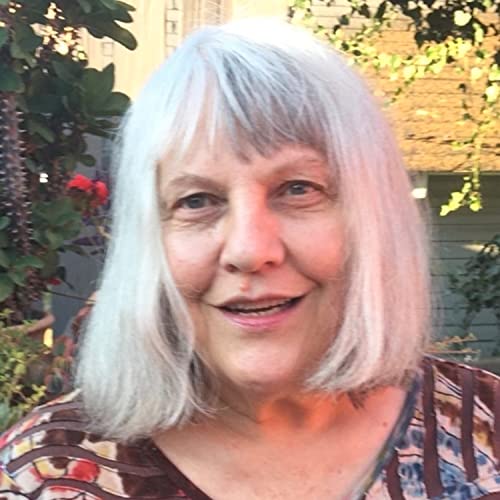
CREATING A PERSONAL NETWORK FOR TRANSFORMATION -- June Holley
June Holley has been weaving networks - and helping other learn to weave networks – for over 40 years. Much that she learned is included in The Network Weaver Handbook, 400 pages of simple activities and resources for Network Weavers. She also created www.dev.networkweaver.com, a site with many free resources and a blog authored by over 40 network weavers.

BOUNDARIES IN BUSINESS AND IN LIFE FOR 2022 - Kimberly Oneil
Kimberly O'Neil is an award-winning professor, executive leader, and social good expert. She was the youngest serving African American woman City Manager in the United States. As a veteran senior government and nonprofit executive, Kimberly has used her voice to impact policy decisions while lobbying in New York City and on Capitol Hill. She now works within the social sector and leads Giving Blueprint, a consulting company with a mission to impact social change through the development of strategic partnerships and growth plans within the social sector.
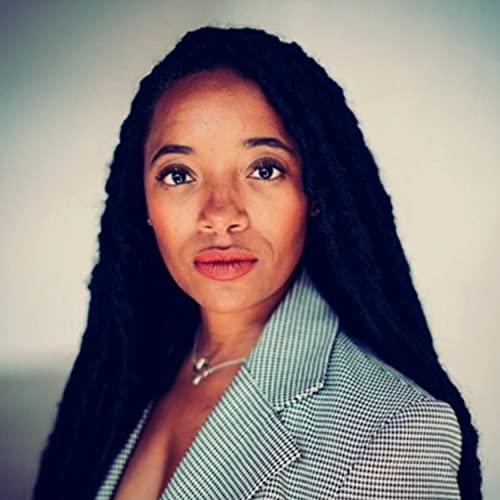
CRITICAL CONVERSATIONS ABOUT RACE - Amber Sims
Amber currently serves as the Executive Director of Young Leaders Strong City, a nonprofit focused on youth development, leadership, and racial equity. She was formerly the Director of Regional Impact for Leadership for Educational Equity, an educational nonprofit focused on leadership pathways in civic engagement. Previously, Amber led workforce development at Workforce Solutions Greater Dallas Opportunity Center. Her theory of change was to emphasize the connection between education, workforce, and dual generation impact.
Other guests have included:
- Dallas Maverick CEO and President Cynt Marshall
- Leah Frazier , 2-Time Emmy Award-Winning and 10-Time ADDY Award-Winning entrepreneur
- Paula Stone Williams, internationally known speaker on issues of gender equity, LGBTQ advocacy, and religious tolerance
- Rafia Zakaria, author of Against White Feminism (W.W. Norton, 2021) and Veil (Bloomsbury, 2017) and a writer for the Guardian, Boston Review, The New Republic, The New York Times Book Review and Al Jazeera America
- Gretchen Bauer, Luxury handbag manufacturer
Find all The Tapestry episodes HERE
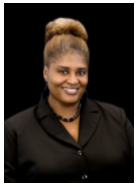
Dr. Froswa’ Booker-Drew is a Partnership Broker. Relational Leadership Junkie. Connector. Author/Speaker/Trainer. Co-Founder, HERitage Giving Circle. Currently, the Vice President of Community Affairs of the State Fair of Texas, she has been quoted and profiled in Forbes, Ozy, Bustle, Huffington Post and other media outlets around the world. In addition, she has been asked to speak on a variety of topics such as social capital and networking, leadership, diversity, and community development to national and international audiences. This included serving as a workshop presenter at the United Nations in 2013 on the Access to Power.
featured image found HERE

Network Weaver is dedicated to offering free content to all – in support of equity, justice and transformation for all.
We appreciate your support!
donate in the box above or click here
Social Change Networks Playbook
The challenges that the world faces today, from climate change to highly unequal economic and social structures cannot be solved by one organisation, government or institution alone. We need to collaborate to share learnings, scale innovations and build our collective capacity to bring about social impact.
The social change networks playbook is the product of a participatory learning journey that we as a group of network practitioners, funders and researchers went on together. Together, we made sense of some of the key questions, challenges and opportunities of impact networks, as well as good practices in facilitating and funding networks. This playbook is our humble contribution to share the learnings that emerged from our journey and support fellow practitioners and funders who develop networks for social impact.
We see these networks as groups of individuals and organizations that harness their connections and relationships towards a shared purpose, to learn together and collaborate to achieve a positive impact on a complex societal or ecological challenge.
There is a rich and growing body of both lived experience and research showing that collaboration through networks can enable learning, cultivate awareness, pool resources and widen access to opportunities. Impact networks can be critical to bringing about systems change across sectors, whether this is in education, youth development, gender equality or philanthropy. However, there are still many questions about how networks can become more thriving, adaptable and resilient:
- How do we most effectively take networks from talk to action?
- How do we convey the value of networks?
- How can we better democratise access to networks?
- What are good practices to build networks?
- How can networks drive systems change?
- How do we know when networks are working?
Through this playbook, we begin to share ideas and frameworks to start addressing some of these questions. The playbook is:
- A Practical Guide that is recognizable, useful and immediately applicable.
- A Curated Overview of resources and methods to support deeper learning.
- An Honest Invitation to experiment with collaboration and alignment.
In each chapter we invite you to use the resources and findings we share to reflect, learn and build strong networks in your contexts We acknowledge that we merely scratch the surface of these questions in this playbook. The more we learned throughout our journey, the more questions arose. We, therefore, invite you to also engage deeply with the reflective questions and additional resources.
Here is an overview on the chapters on different puzzle pieces that are important to consider when developing social change networks:
And, here is what other network weavers, facilitators and capacity builders said:
"The playbook is a valuable resource for network leaders and practitioners. Anyone working to create change through collaboration will be well served by reflecting on the questions and exploring the wealth of resources contained within. ” - David Ehrlichman
"Helpful and practical! This playbook is a great reference for practitioners or anyone who wants to learn how to better understand networks for impact and how to develop them. Anyone working with and “developing social impact networks should have this by their side!” - Kerry Lea Forrester, Lecturer on networks at Tilburg University
“Insightful and reflective of the dynamism of impact networks, the playbook offers clear and accessible guidance for network practitioners and funders alike, using a rich variety of real-world examples and resources. Recommended for stakeholders at any stage of their impact network evolution.” - Gwen Beeman – Small Foundation
CLICK HERE to download a PDF of Social Change Networks Playbook.
We hope you will find it as useful in your own work to co-create thriving networks. It is our collective intention and sincere hope that this playbook contributes to our collective ability to realize a more flourishing world for all.
In connection,
The network learning journey cohort, InHive & the project team.
inHive works closely with partners to develop networks that enable communities to leverage existing resources and amplify impact on their local and global communities. We work with partners from around the world – from school networks in Pakistan, to youth leadership programmes across Africa, to global funders – to build skills and expertise, design network structures, and facilitate participatory methods and collaborative activities for shared engagement, learning, and impact.
Businesses without Bosses: from hard-nosed leadership to sustainable, self-managing systems
As many of you know, I’m very passionate about helping people understand and experiment with self-organizing.
Joella Bruckshaw and Julian Saipe are executive coaches who have a wonderful podcast series called ‘Behind The Screen’ where they share leadership insights with high profile leaders. In this series of impromptu discussions, Joella and Julian, along with their invited guests, discuss success, the characteristics we choose to reveal, and those we choose to keep behind the screen - engaging thoughts on leadership, performance, authenticity and having fun.
In Episode 12 of the podcast series, Joella and Julian talked with me about Self-Organization.
Our conversation explored how “businesses without bosses” can thrive, just as nature’s own eco-systems do. We also discussed how coaching could facilitate a transition from hard-nosed leadership to sustainable, self-managing systems, where purposefulness itself is the outcome.
Access the interview on Behind the Screen podcast at: iTunes/Apple HERE & Amazon Music HERE
June Holley has been weaving networks, helping others weave networks and writing about networks for over 40 years. She is currently increasing her capacity to capture learning and innovations from the field and sharing what she discovers through blog posts, occasional virtual sessions and a forthcoming book.
featured image found HERE
Organizing Liberatory Networks: An Invitation
These are emerging reflections on the work we have done within networks, which includes networks for and led by people of color, multi-racial networks, queer networks, immigrant networks, and other groups that have come together to shift systems towards equity and liberation. In particular, we want to name the leadership of Black and Indigenous women and femmes within these networks who contribute wisdom and emotional labor to support the work of these groups. We are also grateful for the wisdom shared by The Queen Sages, Child Care for Every Family, Protecting Immigrant Families, All Above All, Transformative Leadership for Change, Center for Innovation in Worker Organization and their Women Innovating Labor Leadership Program, and all the participants of the movement network organizer pilot.
The events of the last year, continuing to this year, have called on us to deepen practices that center intersectionality, solidarity, racial justice, and mutual aid. Organizers have been working one-on-one with people in communities and side-by-side with other organizations to support people’s immediate needs and build movements for love, dignity, and justice. Along the way, organizers have deepened their praxis on transformational organizing and working in networked ways. (We think of praxis as having a stance of discovery and learning as we experiment with and embody aligning our values, beliefs, and worldviews with our practices, mindsets, and ways of being.)
This blog shares what we are learning from organizers and grassroots groups about organizing with and in networks. These insights are constantly evolving and changing so we invite organizers, networks, capacity builders, and those who fund this work to learn, practice, and deepen our learning together on how to catalyze and shape liberatory networks. We are in a moment of possibility where we can hold the learnings from the last year(s) and continue to build, nourish, and sustain networks that disrupt conditions in the sector to advance love, dignity, and justice.
What Are Liberatory Networks?
Over the last decade, we’ve learned a lot about how to nurture and sustain powerful, equitable networks (by network we mean collective efforts that seek to align people across constituencies, geographies, issues, or movements to accomplish something no individual entity could do alone). Allen Kwabena Frimpong at AdAstra Collective has introduced us to different types of networks such as the decentralized, self-organized network with many overlapping clusters and a strong periphery. Folks like Deepa Iyer and June Holley have helped us to understand the roles individuals play within networks and movements, such as “the guardian” who creates the conditions for the network to thrive, or “the healer” who mends harm within it. Finally, organizers have helped us understand the essential capacities networks need to be sustainable and advance equity, such as weaving relationships that center equity and trust or managing polarities, conflict, and the distribution of power and resources.
As working in networked ways becomes the norm, we are seeing professionalization, technocratization, and the loss of the relational soul of many of our networks. Thus, we want to elevate what we are learning from folks of color and queer folks who have been catalyzing, co-creating, and evolving networks that embody transformation at the personal, organizational, and network levels. These networks are interdependent, relational, evolving ecosystems where we can be our whole selves, be mutually supportive and accountable, and co-create new futures—where both what we are doing together and how we are doing it are important and integral. In order to distinguish the work of these groups from conventional networks, we refer to them as “liberatory networks.”
Liberatory networks create space for long-term visioning, self-awareness, naming and addressing the oppression that is replicated in our strategies, and the healing of personal suffering. They support individuals to ground in their ancestral and spiritual roots. They have mechanisms to hold people through traumas, triggers, harm, and internalized oppression in ways that restore relationships and connection. Member organizations are actively doing anti-racism/oppression work internally to show up in solidarity with others and in accountability with community, staff, and board.
These powerful networks are disrupting what we have been taught, and now assume, about what strong leadership and operations should look like in the nonprofit sector. Many networks and organizations are moving from solo charismatic leaders to shared leadership, from “power over” to co-powering, from top-down knowing to collective meaning-making, from defaulting to habits of white supremacy culture to practices centering BIPOC leaders and advancing the collective liberation of all people. Through these practices, liberatory networks, in turn, enable us to advance equitable systems change and shift culture overall.
Invitation to Intentional Praxis
As Stacey Abrams points out, now is the time to build the infrastructure we need to have the power to bring forth our most radical imaginations for a new society. This infrastructure will be and already is networked with clusters of organizations and individuals that are interconnected. One organization or short-term coalition cannot meet growing community needs or support healing from trauma; cannot absorb, sustain, or deepen the engagement of millions of people who want to participate; and often cannot transform society. Liberatory networks allow us to build, aggregate, and wield more power. They can provide a space to reconnect and heal from racialized harm, isolation, burnout, competition, fragmentation, and campaign-to-campaign exhaustion. They can enable us to collectively deepen our praxis towards liberation.
Organizers are important bridgers both across and within liberatory networks. When organizers have space to work with community and network members, they can co-create liberated, powerful, and creative spaces that inform and shape liberatory networks. When included in developing bold visions and strategies at the network level, organizers bring these ideas into relationships and action on the ground.
Organizers are already drawing connections within their work and learning about and co-creating liberatory networks through their own experimentation. At the same time, organizers and other network members, such as capacity builders, facilitators, and funders, could be stronger partners and architects in building and nurturing the infrastructure we need for a liberated future if there were more spaces for intentional praxis and broader sharing of these learnings across – in addition to within – networks.
What We Are Learning About Organizing Liberatory Networks
The following are praxis seeds for organizing in networked ways to advance liberation. We draw on stories shared through two pilot classes co-authors Susan, Trish, and Robin did with 29 organizers, a convening we did with grassroots leaders and funders, and our own experiences partnering with organizing groups and networks. We invite you to contribute your own insights as well so that we can continue a dialogue about organizing liberated networks. What is your praxis? How can we continue to evolve our practices to get closer to our aspirations of liberation and racial justice?
1. Centering racial equity and healing, particularly addressing and repairing inequitable distribution of power, resources, and labor
When working in and across networks, organizers are being thoughtful and transparent about how to marshall resources, recognition, and capacity equitably given current and historic racism and intersecting oppressions. Organizers spoke to three ways that they are doing this. First, several organizers shared how they use somatic practices and storytelling to support BIPOC members to develop a racial analysis, connect to ancestral wisdom, and embody what it means to center themselves. As one example, an organizer described this somatic stance: “I have my hands out; I’m open. I have one foot forward and one foot back; as a male Latino, I’m listening to women and courageously taking space against patriarchy.” Second, when individuals are grounded in their whole selves, organizers can facilitate conversations about the differences among groups. One person, for instance, shared how white and BIPOC caucuses helped develop radical relationships across racial groups. Lastly, organizers in networks are addressing inequitable distributions of labor, resources, credit, and compensation. Women of color and Black women and femmes, in particular, often hold emotional labor and relational work in networks. Participants at the NEST1 convening discussed ways to shift this dynamic by compensating women for this invisible labor, sharing or shifting responsibilities to white men, and prioritizing regional tables that center leaders of color.
Opportunities for Praxis Exploration
- Centering people of color, blackness, and indigenous peoples while de-centering whiteness
- Building a foundation of trust to recognize power differences and have courageous conversations
- Embodying love, human dignity, and compassion
- Unpacking levels of oppression while recognizing the historic social construction of racism
- Moving from oppression to liberation by reconnecting to source, story, body, and emotions (thanks to Monica Dennis for this framework)
- Attending to who does the emotional labor and how we share that or rectify it
- Managing the tensions between addressing immediate needs of communities of color and laying long-term foundations for transformation
- Reflecting on where our movements have failed to embody our values and consciously co-create the conditions for embodying them moving forward
- Centering reflection, learning, repair and re-creation as a continuous and loving process.
2. Doing the inner work needed for personal and interpersonal transformation, which is critical for nurturing radical relationships and our interdependence
There are two areas of inner work that are top of mind for organizers working in networked ways. The first area is nurturing radical relationships and connections within and across movements. Two of the organizers we work with shared that, when they had the opportunity to develop a shared political analysis and vision with a people of color caucus over the course of a two-day retreat before collaborating with the broader network, it enabled them to nurture trust, recognize shared values, and find ways to honor each person’s and organization’s contribution to the movement. Another organizer shared how they connected two groups that would not normally be allies by asking a powerful question: “What does home mean for you?” This question later led to a storytelling organizing process across multiple organizations, supporting both individual and group transformation.
The second area is embracing generative tensions as a liberatory practice. These tensions are often framed as polarities and include abundance and scarcity, conflict avoidance or expression, centralization or decentralization, focusing nationally or statewide, transparency and information overload, accountability for racialized harm and cancel culture, calling partners into a radical stance or compromising for an interim win, and so many more. Organizers regularly navigate these tensions as their context continuously evolves. This involves reframing disagreement from being divisive to being generative. Navigating tensions can deepen our collective capacity to make meaning of complex issues. It can help groups discern when our desire for resolution is rooted in our discomfort with holding multiple and different ideas (so we could get more comfortable living with conflict) and when this desire is needed to maintain the integrity of the network. Organizers further shared that they use racial healing, restorative justice, conflict resolution, polarity management, forward stance, and many other approaches to name and reconcile tensions and realign and heal networks and relationships.
Opportunities for Praxis Exploration
- Integrating head, heart, and body
- Embracing change and emergence
- Nurturing a whole person and their ways of being
- Creating space for relationship building
- Recognizing difference, naming tensions and polarities, reconciling conflict generatively, and healing harm
- Tending to well-being and sacred grounding
- Supporting self and community care
3. Shifting to more emergent and collective ways of understanding and navigating complex systems change
Organizers regularly engage community and network members to analyze systemic root causes and identify leverage points for transformation. They use a range of practices like storytelling circles and collective vision murals to do so. During the pandemic, organizers became pros at adaptation – moving to digital organizing, virtual policy advocacy, and mutual aid to address emerging community needs. They built in check-ins, yoga, breathwork, meditation, and other practices to support themselves and community members to be resilient. Organizers are always adapting as they seek complex systems change including:
- Tending to both campaigns and the sustainability of people, organizations, and the network overall
- Figuring out when all network members need to be in agreement and when a critical mass of a network can move things forward
- Having ways for parts of a network to opt in or out of democratic processes
- Flexing between decentralized experiments with liberated models and coordinated targeted campaigns
NEST convening participants also shared how networks are themselves systems, and people need well-resourced spaces to disrupt white supremacy, model liberatory ways of being with each other, and translate learnings from successes and failures without judgment.
Opportunities for Praxis Exploration
- Forging interconnectedness and interdependence and breaking silos
- Shifting from scarcity to abundance
- Embracing change and emergence while letting go of certainty and the idea that healthy networks are static
- Developing a complexity mindset, which means assuming disagreement, unpredictability, ambiguity, and emergent patterns
- Listening deeply, holding multiple perspectives (i.e., individual, organization, and network), and generating nuanced alternatives
- Experimenting as a way to take risks, innovate, and learn
4. Sharing leadership and decision-making power in ways that lift up Black and Indigenous peoples and other people who have historically been excluded from power
Sharing leadership is core to transformative organizing in networks. What this means for organizers is supporting community members to recognize and develop their own leadership, and centering Black, Indigenous, and other people of color in leadership (both of which are critical in non-network contexts as well). For instance, women of color organizers Trish Tchume and Aida Cuadrado Bozzo have worked with groups of organizers to navigate complexity and emergence (which are typical for networks), in support of a shared vision, build teams that are intentional about staying in “right relationship,” and call in community members to a liberatory stance.
Sharing leadership and power also means creating transparent feedback loops, opportunities for community members to practice different leadership roles within a network, and spaces to collectively connect to heart, body, and spirit. For instance, one organizer shared how they used salsa dancing to invite people to show up as their full self and see the different roles in a movement (e.g., lead, follower, creating space, etc.). As another example, organizers are engaging community members (who are compensated for their time), to gather community perspectives, stories, and experiences; shape priorities of the network itself; review messaging, materials, and tools that are used with community members; and co-develop actions on shared campaign tactics.
Opportunities for Praxis Exploration
- Recentering BIPOC leadership, particularly as decision-makers and liberated gatekeepers
- Cultivating not one leader but many leaders who can trade-off and play different roles
- Engaging and developing leadership at many points and levels of authority in the system
- Systems and processes for shared meaning making, co-creation, and mutual accountability
- Connect to self as a whole person and developing trusting relationships with others
- Sharing decision-making power, credit, resources, influence, and turf with attention to liberation, equity, and reparations
- Collectively determining how funding will be raised, used, and distributed in the network
5. Creating space to connect to our multiple wisdoms and intelligences (e.g., ancestral, spiritual, natural, creative, somatic, etc.)
Some organizers have long histories of connecting community and network members to multiple wisdoms and intelligences (e.g., theater of the oppressed as a somatic and artistic practice for political education). Other organizers spoke to how challenging it is to shift organizing patterns to make space for spirituality, emotions, artistic and experiential practices, and bodywork. Many organizers strive to hold themselves, partners, and community members as whole people in their full dignity, which means supporting people to develop their innate talents, decolonize, heal, and express themselves in the ways that make sense for themselves. This is critical to transformational organizing and to organizing liberated networks. Trish Tchume and Aida Cuadrado Bozzo, with Viveka Chen, Zuri Tau, Holiday Simmons, and Susan Wilcox, have developed “Calling In & Up: A Leadership Pedagogy for Women of Color Organizers,” which supports organizers in creating liberated spaces that embrace multiple wisdoms. The guide shares a range of spiritual, cultural, and somatic practices to decolonize spaces, create the conditions to live into liberation, and build and deepen relationships.
Opportunities for Praxis Exploration
- Recognizing, lifting up, and engaging wisdom in multiple forms including experiential, ancestral, spiritual, natural, somatic, art and culturally-based forms of expression and meaning-making
- Embracing being a co-learner and co-creator rather than or in addition to being an expert
- Rooting into a values-based frame
- Shifting approaches to organizing that disproportionately value analytical, intellectual, and logical forms of knowing
An Offering for Praxis
This blog shares what we’ve been learning from organizers and grassroots groups about organizing liberatory networks. We invite you to share your learning, insights, and questions so that we can continue a dialogue about organizing liberatory networks together.
How are your networks embodying liberatory network approaches?
Please share your reflections in the comments below!
1The Networks for Equitable Systems Transformation (NEST) convening took place across 2.5 days in 2019. The group consisted of network funders, participants, and intermediaries who shared space and surfaced challenges, opportunities, and questions related to their work in networks. Read more about the design of the NEST convening and key takeaways from participants here.
2Here we are not referring to an organization’s membership base since not all organizations have a membership model although there can be overlap when community members are also members of an organization.
We'd like to thank Panta Rhea for supporting the movement network organizer pilot and our efforts to share this learning with you through this blog.
About the Authors
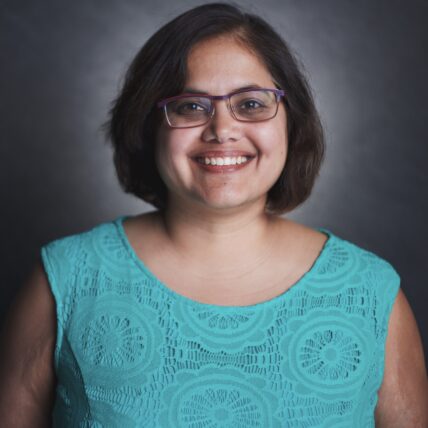
Susan Misra’s life purpose is to work with advocates and activists to actualize their visions and values of justice and equity in their relationships, structures, and work today. She has over 20 years of experience in developing equitable, sustainable organizations and networks for movement building.
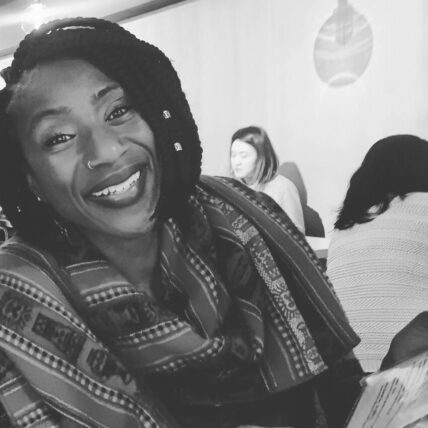
Trish Tchume is the Leadership Program Director for Community Change and comes with almost two decades of experience helping everyday people see their role in the gorgeous project of building a more just and equitable society.
Robin Katcher strengthens organizations, leaders, and networks on the front lines of social change. Her deep experience in social justice movements – as an organizer, educator, legislative advocate, and board member – informs her rigorous approach to building powerful organizations, leaders, and networks.

Natalie Bamdad joined Change Elemental in 2017. She supports Change Elemental consulting engagements through research, analysis, and project management. Her core areas of expertise include strategic planning and program design and implementation.

Natasha Winegar is a researcher, writer, communications specialist, and coach. She joined Change Elemental in 2013, and is our Research & Communications Manager. She collaborates on our consulting, coaching, and learning engagements, bringing a blend of curiosity, imagination, strategic insight, and a commitment to love, dignity, and justice.
Originally published at ChangeElemental.Org
Banner Photo Credit: Cuba Gallery | Flickr
by SUSAN MISRA, TRISH TCHUME, ROBIN KATCHER, NATALIE BAMDAD, NATASHA WINEGAR



